An increasing importance in the modern game is being placed on players’ partaking in individual practice. This is not just at youth development levels but with senior pros playing at the very top of the game. Many ex-players have hailed Ronaldo’s arrival at Manchester United in developing a culture of voluntary individual practice after their team sessions. Manchester City’s Phil Foden working on his finishing after an England session, admittedly from several years ago, has been doing the rounds recently on social media. Individual practice, whilst important year-round, can be especially helpful at this time of year when lots of players are in their off-season and not working at their clubs.
This tactical analysis will analyse goals scored in the opening weekend of Euro 2024 and provide examples of how players and coaches can replicate these tactics in one-on-one or small group practices. With a focus on finishing, these exercises will be particularly beneficial for strikers, but players in all outfield positions can benefit from them. This tactical theory will focus on three types of movements in and around the box. The analysis will provide examples of movement to receive in behind, attacking crosses and creating space at the edge of the box to shoot.
Movement to receive in behind
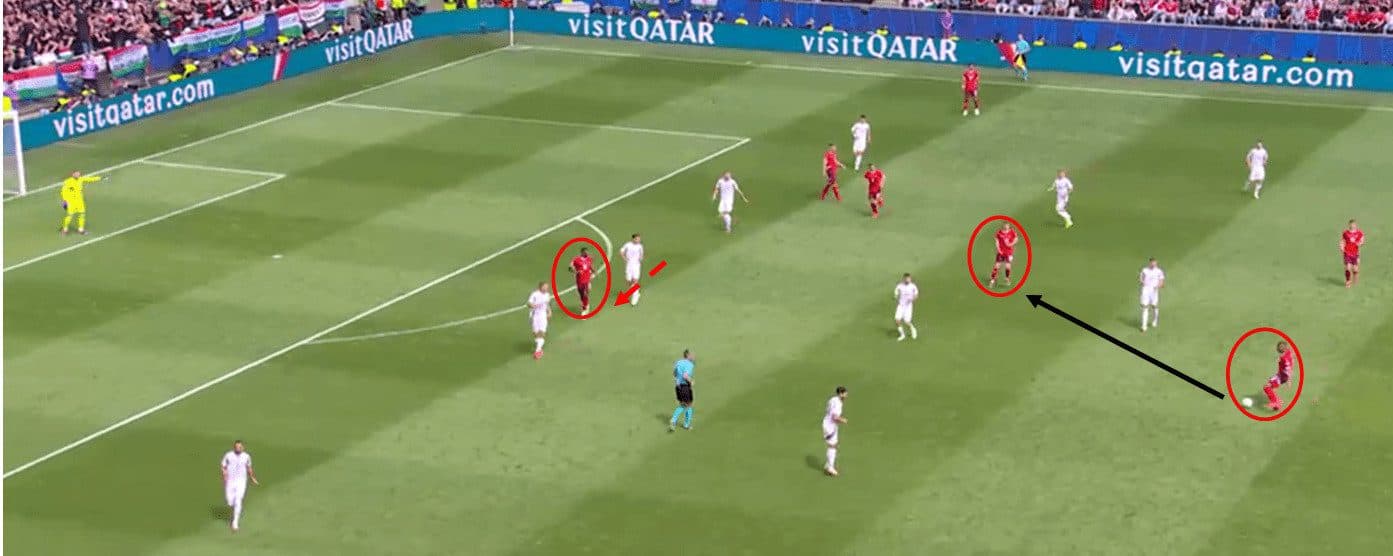
The above example of a striker moving to receive in behind comes from Switzerland’s 3-1 win over Hungary. Switzerland forward Kwadwo Duah opened the scoring with a simple but clever and effective movement that allowed him to receive behind the opposition’s backline.
As the ball was played into his midfielder, Duah moved away from the ball to the blind side of his marker. He created an angle between him and the ball by picking up a position between the centre-backs. This will lead to his teammate being able to play a straight through-ball for him to run onto. It also meant he was no longer in the view of the first centre-back and created doubt in the centre-back’s minds as to who was responsible for picking the striker up.
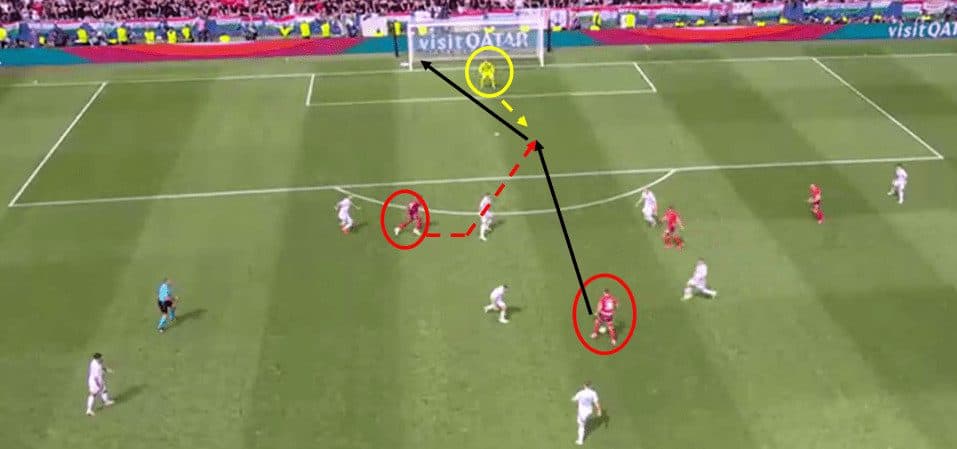
As the midfielder took his first touch forward, this was the forward’s trigger to start his run for the ball. The run, which was initially called offside by the linesman before VAR overturned it, was perfectly timed. The timing of the run is vital. If he goes too early, he will be offside and will alert the defenders to his movement. Too late, and the ball will roll through to the goalkeeper. The first few steps were across the back line before darting towards the goal as soon as the ball was played.
The angle of the run and the pass allowed Duah to receive, facing the goal and, importantly, the goalkeeper. The goalkeeper came rushing out to narrow the angle. Just as he was about to set and make himself big, Duah, being aware of his movement, calmly passed the ball past him into the corner of the net.
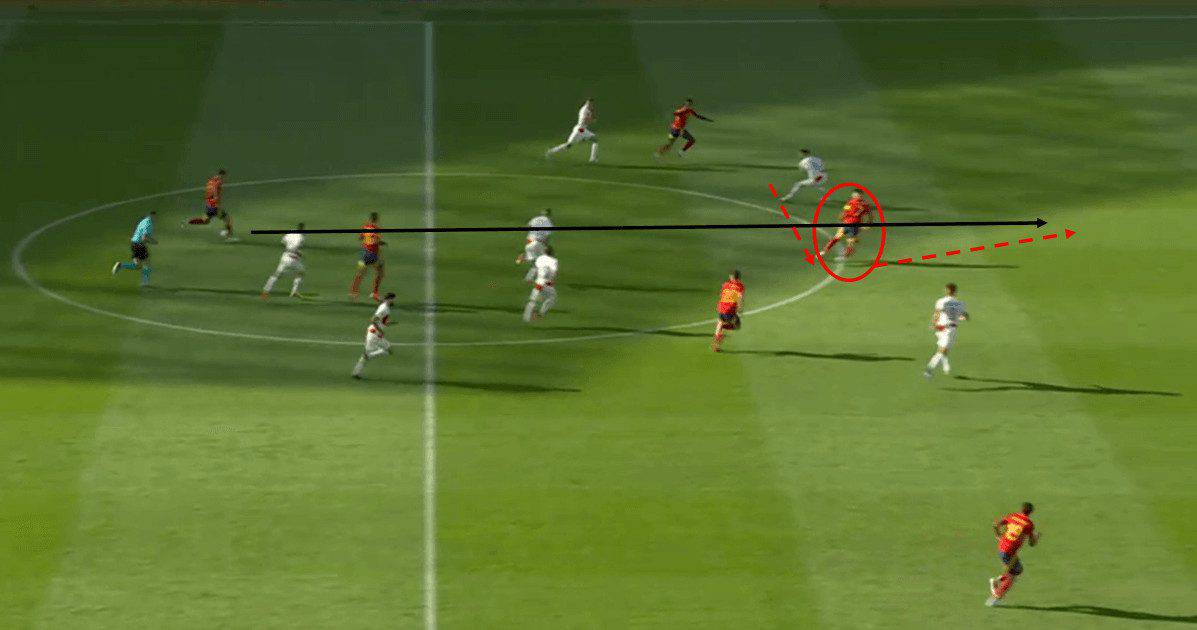
Álvaro Morata made a similar movement, further from goal, in the build-up to his and Spain’s opening goal of the tournament against Croatia. The Atlético Madrid forward moved in between centre-backs and opened his body up before running onto a Fabián Ruiz pass.
Exercise 1 – Movement to receive in behind
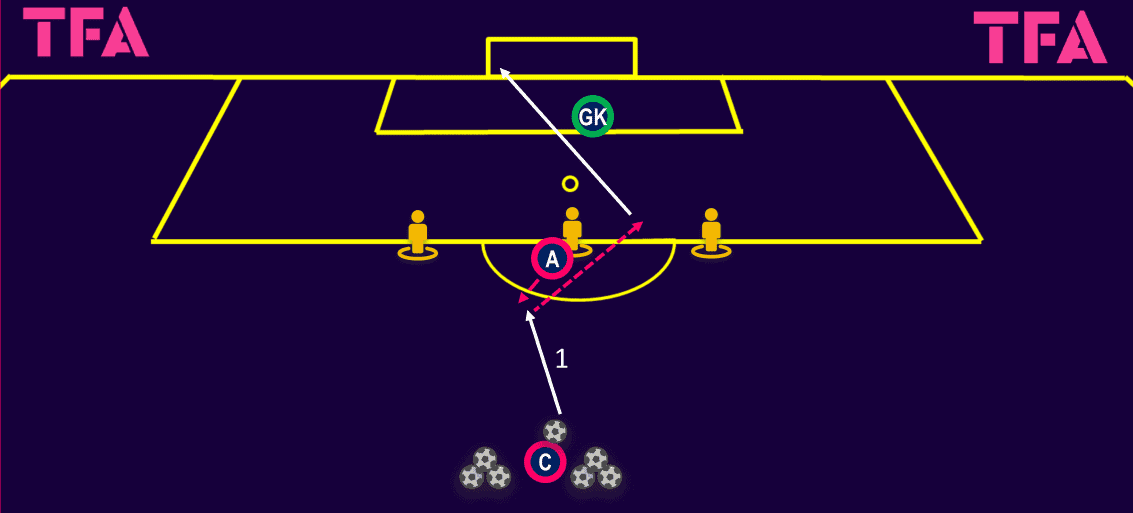
This exercise focuses on recreating the above movements to receive in behind, plus two alternative chance-creating movements. The drill begins with the working player making an angled movement in front of the mannequin, representing a centre-back. The coach should play a firm pass into the striker’s back foot (foot furthest from the ball). The backfoot pass is designed to draw out the defender. The angle of the movement and the striker’s body shape should allow a first touch to be taken across and beyond the on-rushing defender and into the box. The working player’s next action should be to shoot low to one of the corners as quickly as possible with their second touch.
Coaches should encourage players to take their second touch as quickly as possible and to keep their chest over the ball to keep the shot low. They do not have to look up to see where the goalkeeper is, instead prioritising a quick shot before the goalkeeper is set.
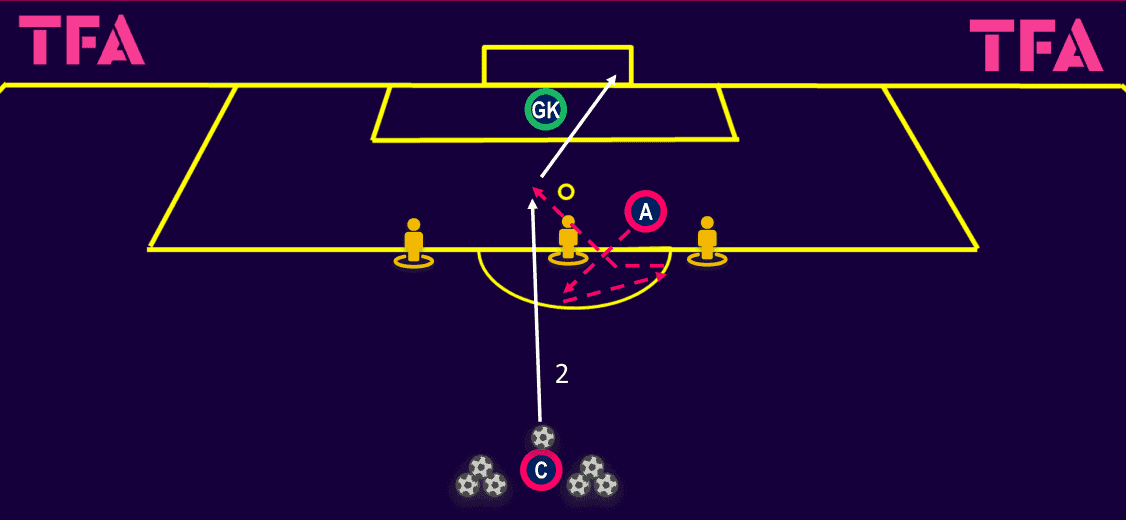
The second movement is based on the analysis of Duah and Morata. After taking the first shot, the forward moves up against the most central centre-back before backtracking to pick up a position in between two defenders. The striker then runs across the line and cuts towards goal just after the ball is played. The shot should be taken first time with players encouraged to find the corner of the net.
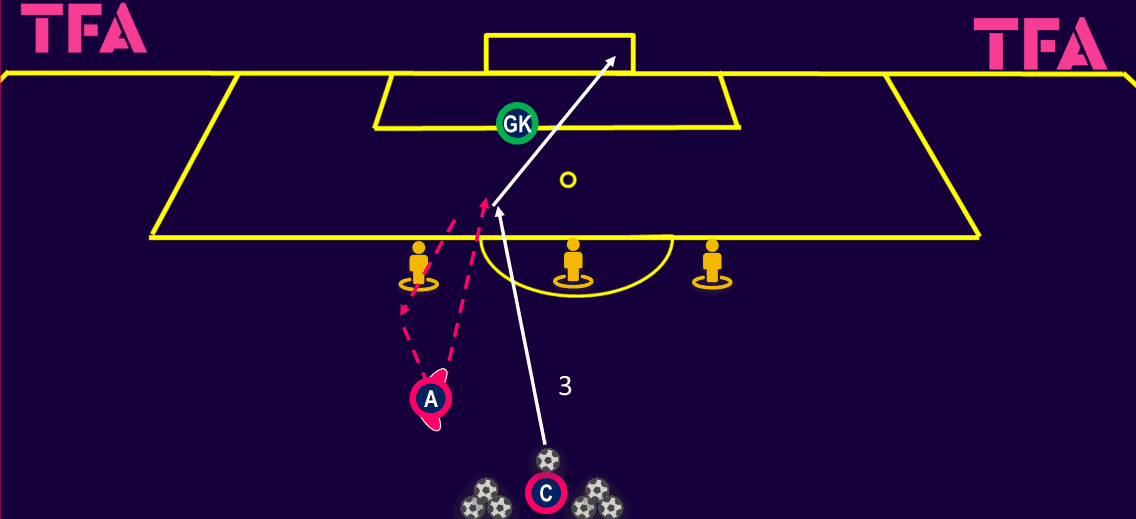
The third pass involves a double movement to bring the centre-back towards the ball before spinning in behind. The timing and change of tempo are vital to attract the defender and create enough space to receive inside the box. After the second shot, the attacker should jog towards the central centre-back. The striker should then spring towards the ball at pace with a side-on body shape. As the ball is passed into the space created, aided by being side-on, the striker should change direction and dart onto the ball, running across the defender.
If no goalkeeper is available, mini-goals or even cones can be placed in the corner of the goals to be used as targets. The drill is repeated with movements going in the opposite direction to allow the forward to practice with both feet.
Attacking crosses
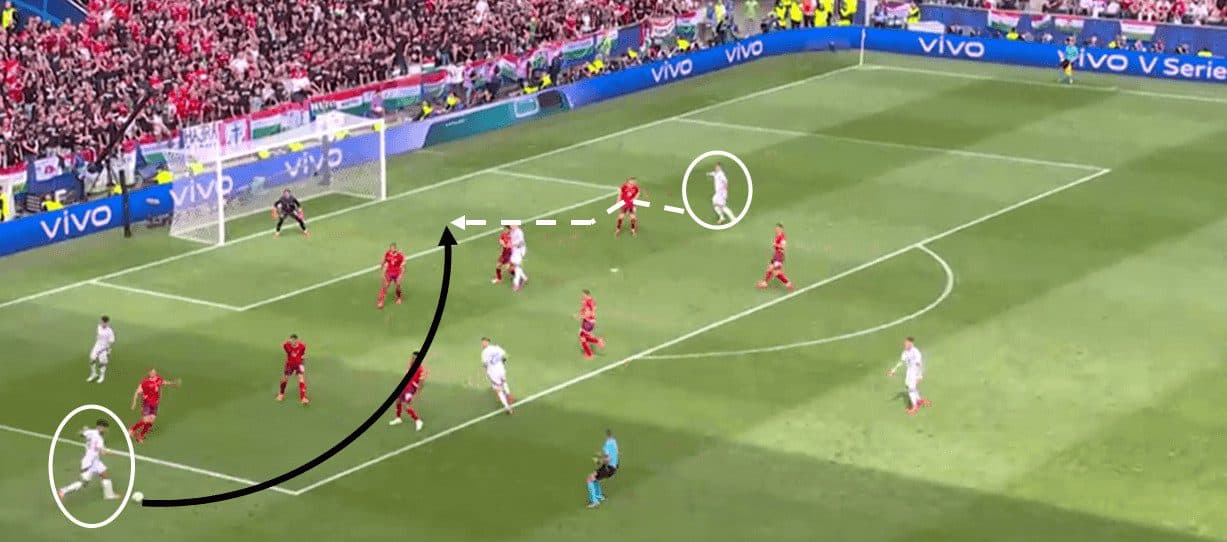
Several goals at this year’s Euros have already been scored by players attacking crosses on the edge or just inside the 6-yard box in the centre of the goal. Often, these types of chances require bravery from the forward to attack the ball either in between centre-backs or close to the goalkeeper. Bravery, mixed with movement that catches defenders by surprise and beats them to the ball are essential in these scenarios.
The above image is from Hungary’s sole goal against Switzerland, scored by Barnabás Varga. As the image shows, Varga is positioned on the blind side of the Swiss backline, just outside the back post, as his teammate is about to cross the ball.
After the ball was kicked, Varga darted behind the ball-far defender and into the middle of the goal area. By holding his run until the ball was kicked, the forward was all but impossible to track, as the defenders had to keep their eye on the ball as it was being whipped in.
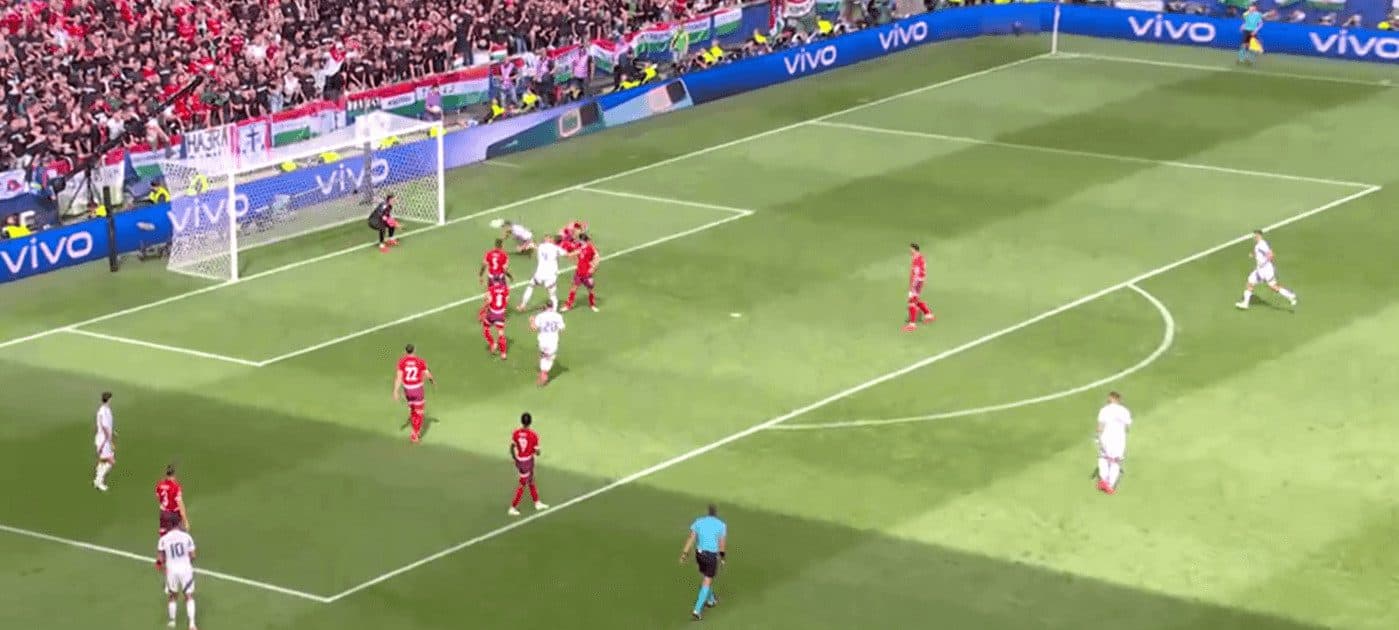
With the more central defender occupied by Hungary’s striker, Varga was able to sneak in between defenders. The ball-far defender then found himself on the wrong side of his mark, with the goalkeeper pinned to his line due to the speed of the cross. Varga then throw himself at the ball to score with a diving header.
Exercise 2 – Attacking crosses
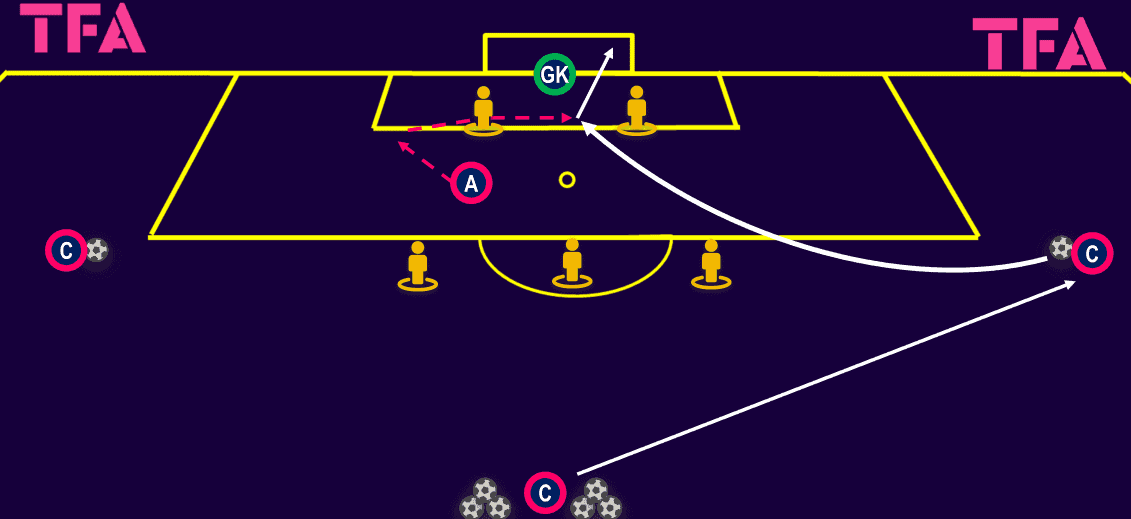
This next exercise works on players attacking the ball in the middle of the goal area with a first-time finish. It can be tagged on the end of the exercise from the previous section. After completing the third shot, a ball is played to either side. The working player should move away from the next ball to just outside the back post. As with Varga’s movement, as the ball is delivered, the working player should dart behind the nearest defender and attack the ball in the middle of the goal. After the ball has been attacked from one side, it is then delivered from the opposite side, giving the forward two opportunities to score.
For the purposes of the exercise, the goalkeeper should be told to remain on their line for the cross. If the quality of the delivery is not reliable, the feeders can throw the ball with their hands into the area instead.
Even when the ball is not thrown or crossed accurately, players should be encouraged to do all they can to get a shot at goal. As with Varga, it is crucial in these situations that the player is willing to attack and connect with the ball with any part of their body that they can. This may require a diving header or sliding volley, for example.
Shooting from outside the box
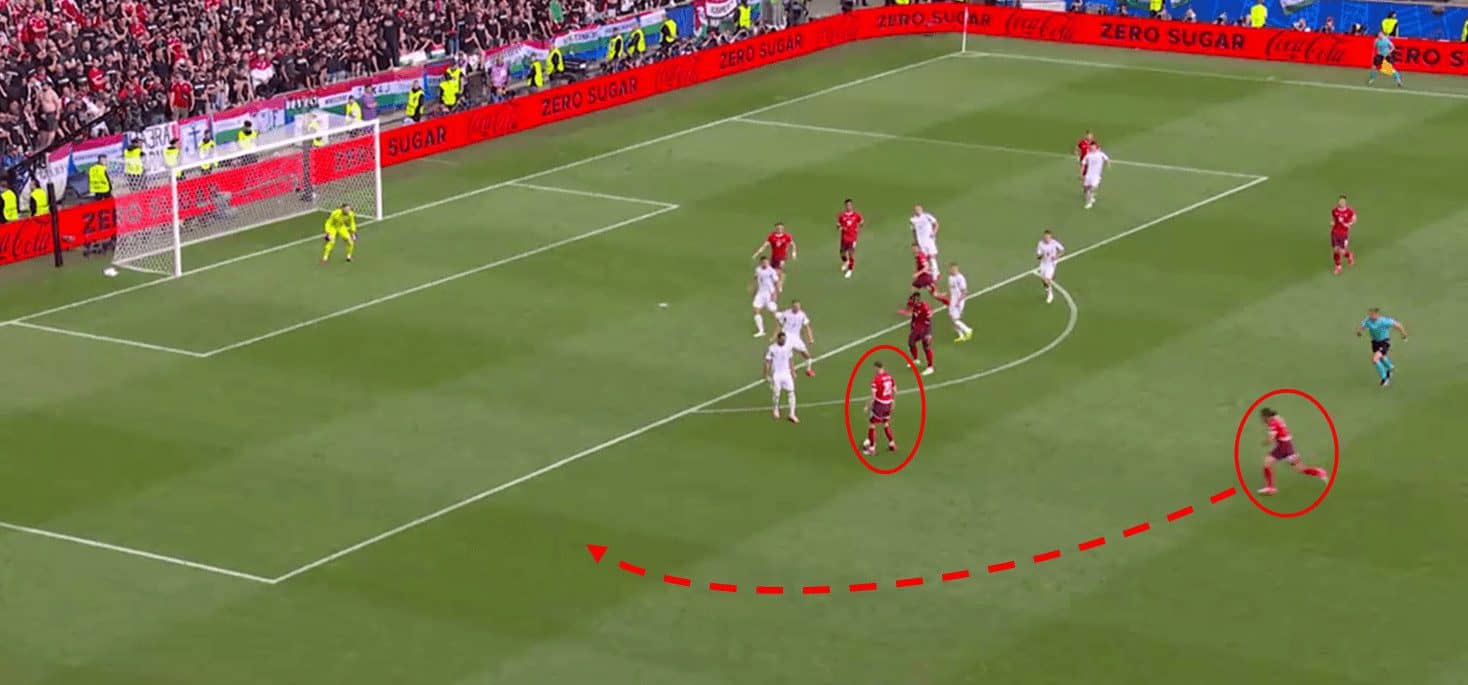
The above image is also from Switzerland against Hungary and shows the moment before Michel Aebischer put Switzerland 2-0 up. Hungary are crowding the central area, blocking the Serie A midfielder’s view of the goal whilst allowing the space for an overlapping run.
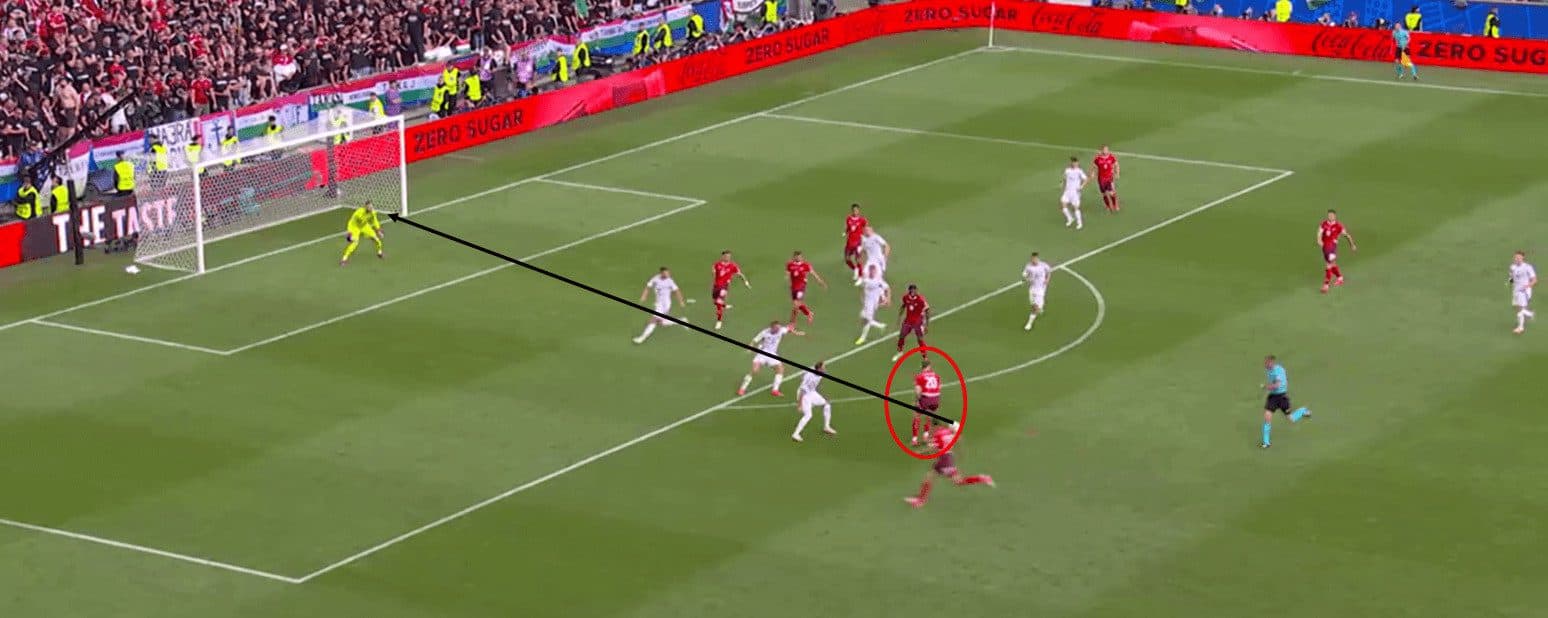
Aebischer pauses on the ball, drops his outside shoulder, and shapes to play a pass into his overlapping teammate. As the Hungary players jump to press the overlap, Aebischer takes a big touch inside with his opposite foot. The slightest drop of his outside shoulder now creates more than enough space for a shot at goal, and Aebischer fires into the bottom far corner.
The speed and accuracy of the shot, plus the bodies in between the goalkeeper in the ball, means the goalkeeper cannot dive until the last second. He is unsighted and possibly wary of a deflection. By the time he commits, it’s too late, and the ball is in the net.
Spains Fabián Ruiz found himself in a similar situation at the edge of the box against Croatia. The PSG midfielder used a ‘Cruyff Turn’ to disguise his intentions and wrong-foot the on-rushing defenders before scoring Spain’s second.
Exercise 3 – Shooting from outside the box
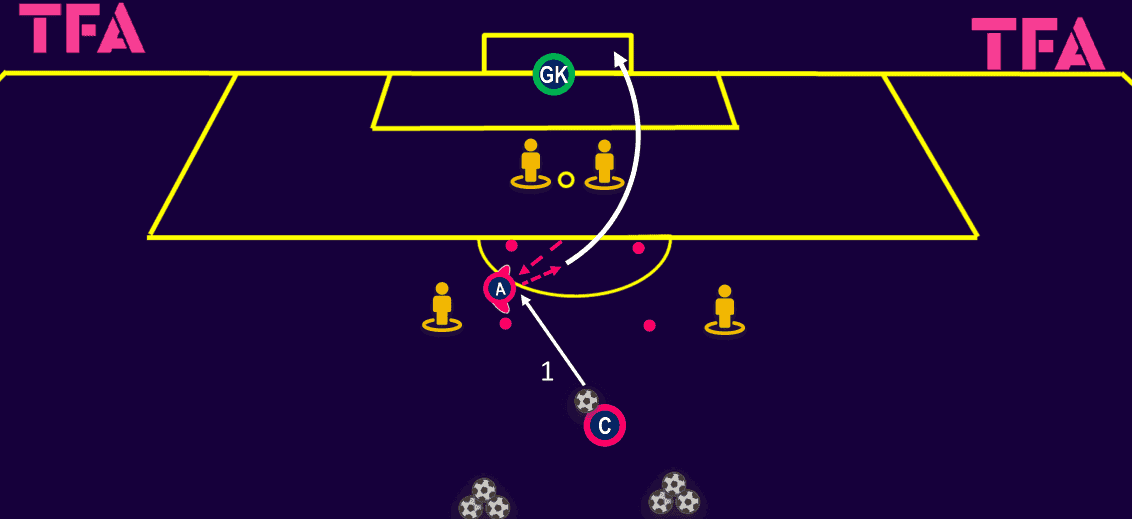
This final exercise is designed to work on players shooting from a standing start and using a faint or turn to create enough space to shoot. The first shot begins with a player or coach passing into the working player who has made a diagonal movement to show for the ball. The player receives side-on, allowing them to take a forward first touch.
The forward, facing the goal, should pause on the ball before dropping their shoulder to faint to one side. The ball should then be rolled to the opposite side with a big enough touch to allow the player to step onto the ball whilst striking it. The shot should be aimed towards the far post. Mannequins (shown) can be added to give the striker something to bend the ball around.
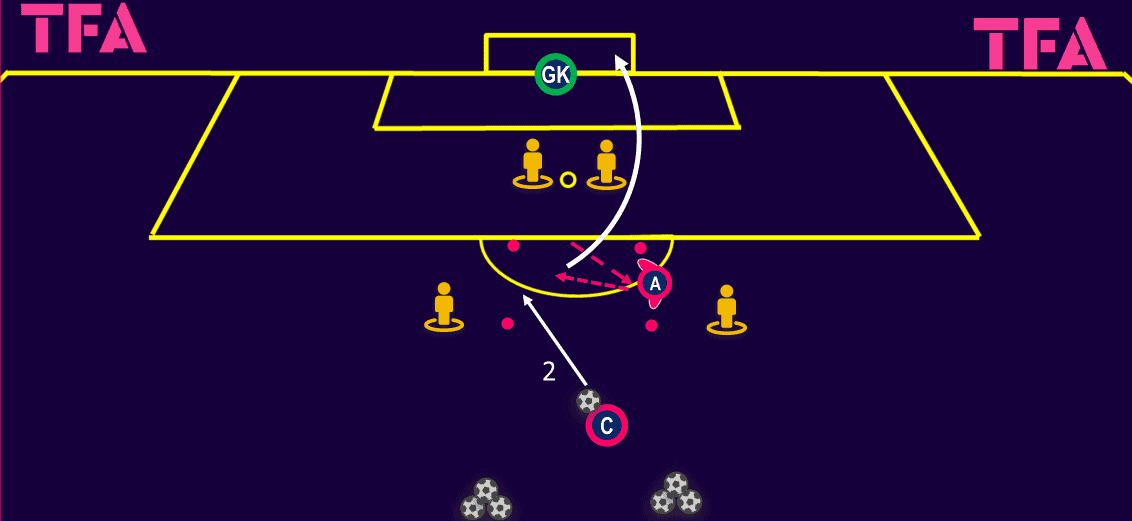
The forward then makes the same initial movements for their second shot. This time, instead of fainting one way, a ‘Cruyff turn’ is performed. The player should set to shoot with their left foot, before pulling the ball back between their legs. The touch backwards should set the player to shoot with their next action. The shot will again be taken with the right foot and aimed around the mannequins.
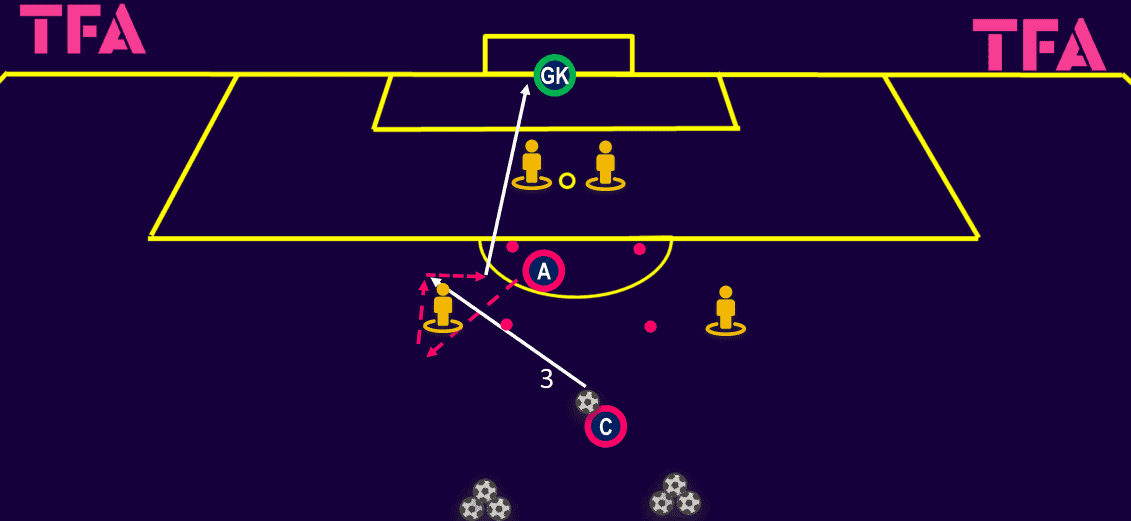
The third and final shot in the sequence sees the working player open around a mannequin before receiving an angled pass around about in line with the edge of the ‘D’. The striker should receive the pass with a diagonal or lateral touch inside. This allows them to shoot with their next touch.
Players should be encouraged to shoot quickly after their first touch before being closed down. The shot should be struck with the laces to give optimal power from this far out, and any deflections should be followed up.
Conclusion
The preceding exercises have all been unopposed to allow coaches to focus on specific movements and aid shooting repetitions. However, they are designed so that live defenders can be added to apply half or full pressure at the coach’s discretion.
As evidenced by the tactical analysis of Euro 2024 opening weekend goals, the importance of individual movements and skill moves, however simple, are vital in goal creation. Players should be encouraged to work on these as much as possible to improve their timing and technique. Whilst pre or off-season is the ideal time to do this, there should be an individual focus year-round.






Comments